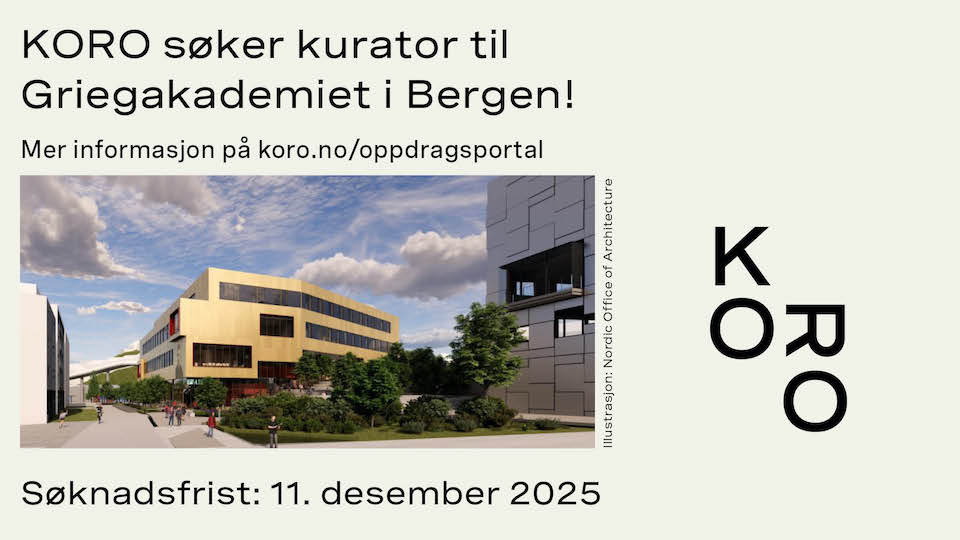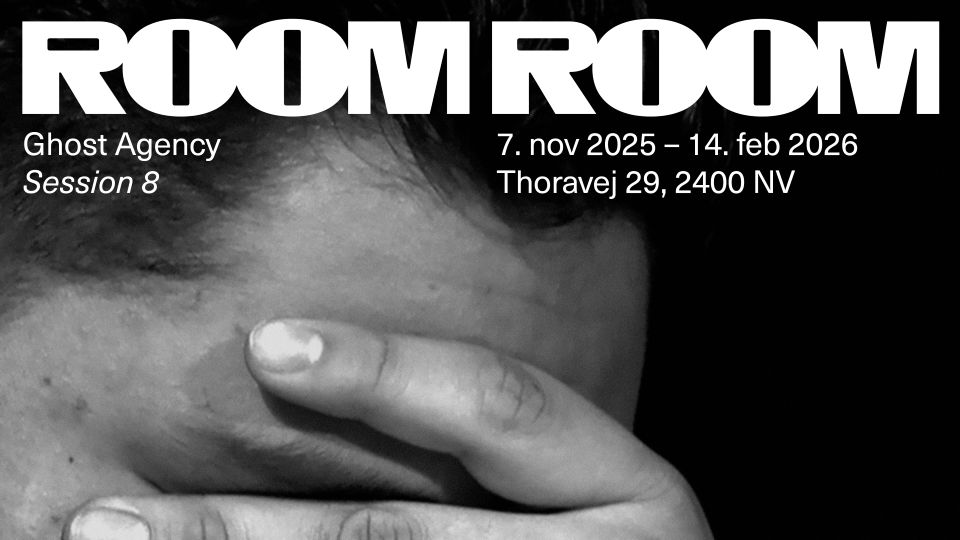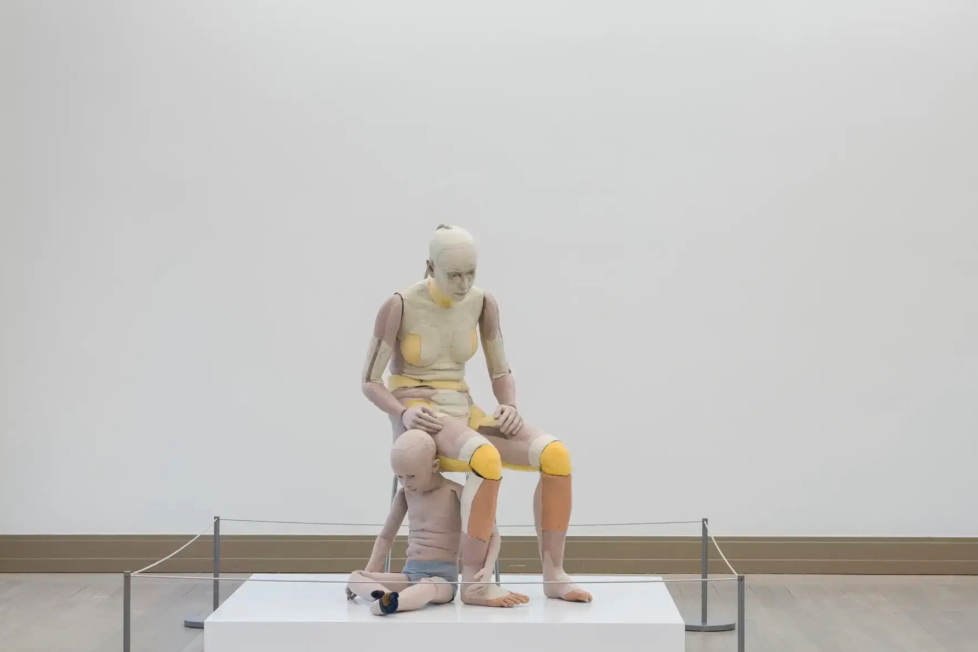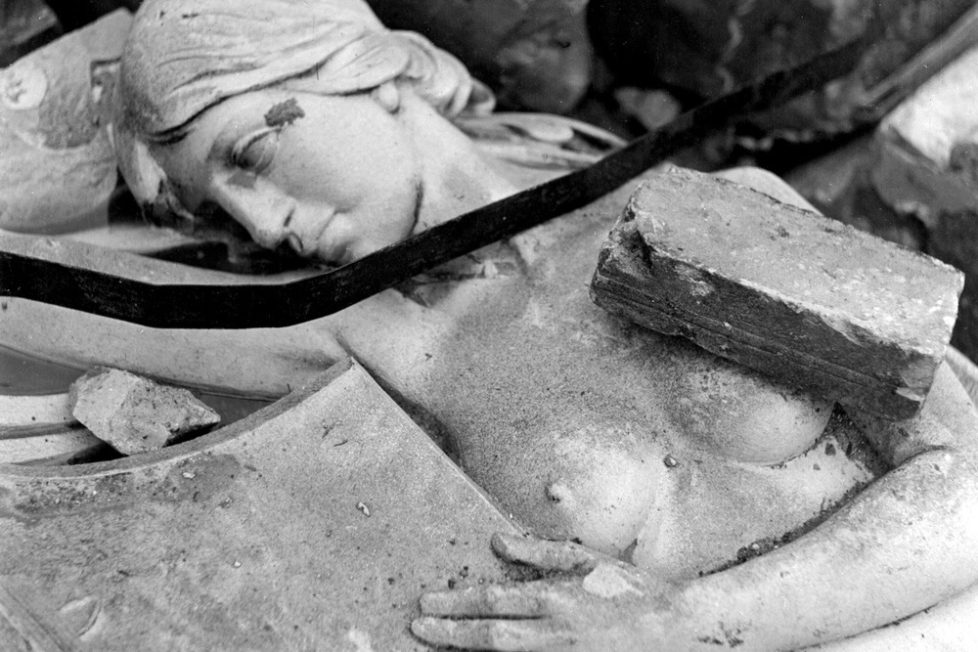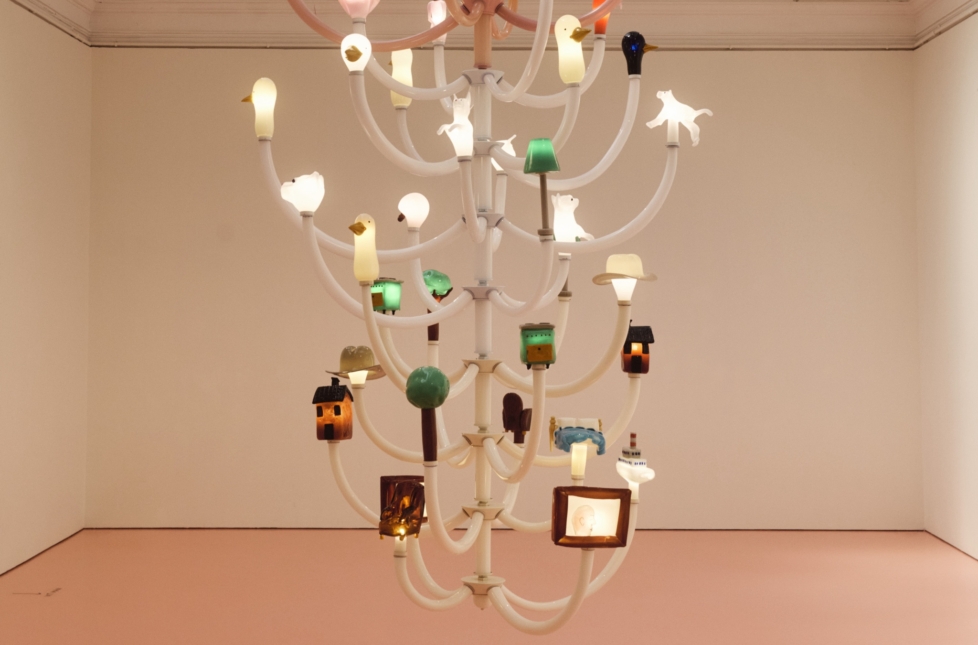
Every site is a mess, a nonstop accumulation of materials that eventually sediment and become part of geological history. But materials also get extracted and turned into capital, and thereby captured by human history – until they turn into waste, often toxic, and become obsolete again. Silje Figenschou Thoresen’s installation A quiet and protected water, the layers above it, passing undisturbed at the Astrup Fearnely Museum in Oslo uses precisely this mess as a resource in order to articulate a paradigm for sculptural production.
The area around Kirkenes, a town near the Russian border where the artist grew up and still resides, is designated as a specific starting point for the work. The materials collected and deployed are quite diverse: driftwood, leftover material from the temporarily inoperative iron ore mine Sydvaranger, nylon ropes, planks, fish fins, and even fragments of sculptural casts from Figenschou Thoresen’s student days. What unites all this stuff is that it once was close at hand. Instead of trying to invent new forms with specific tools by mastering matter, sculptural activity is re-articulated here as a form of gathering, which from the start has ethical implications. It is an ethics centred around the body, on what it can carry, deal with, or just use, without a need for larger infrastructures or institutions.
Set up on the second floor of the museum’s collection wing, Figenschou Thoresen’s installation comprises a diverse group of sculptural assemblages. All of them are placed on the floor. Some are so tiny they are in danger of being stepped on. Her assemblages, first conceived in the studio and then adjusted and re-grouped on-site in Oslo, have a decidedly provisional shape. The parts are stacked on top of each other. At times they are bound together with ribbons or ropes, adding to the impression that the constructions are temporary halting points; they look ready to dissolve again at a moment’s notice, so their parts can be reassembled for other purposes. Taking cues from musical improvisation, Figenschou Thoresen structures her arrangements mostly through repetition. Upward diagonals dominate. There is also a mimetic impulse discernible in most of the assemblages; quite a few of them look like organisms or even animal bodies. Often, the artist’s stacking of discarded materials ends up forming symmetrical shapes. The resulting objects clearly have a front and a back, or even a head and a tail.

Describing her method in the exhibition text, Figenschou Thoresen says that she lets her materials “determine the shape instead of imposing a form on them from the outside.” In this way, she obviously negates her own agency. Such discursive manoeuvres must be read in the context of formalism’s long and ideological history, ranging from Vladimir Tatlin’s Constructivism to today’s often careless affirmations of ‘vibrant matter’. But matter is never all, and it certainly doesn’t exist outside of technology or the violent structures of extraction and distribution. Appealing to the agency of the material itself, like Figenschou Thoresen does, risks excluding these aspects of form, which always already includes human intentions and strategies.
If we accept the museum’s characterisation of the show as “site-specific,” it must be added that this site, then, is split between the works’ institutional frame – the works were commissioned by the museum – and the longue durée of ecological exploitation and colonial destruction of Indigenous practices in the Kirkenes region, which is part of the historical homelands of the Sámi People. Instead of looking at Indigenous practices through the lens of specific forms of craft – which could be studied, archived, and exhibited as things of the past – Figenschou Thoresen approaches it as a tradition, which is neither discontinued nor obsolete. She demonstrates how such the improvisational use of things at hand persists in everyday life. Yet she redirects them from concrete practical instances – like building shelters, fixing things, or dealing with material shortages under extreme climatic conditions – to an aesthetic context.
In the exhibition space, a large window overlooking the Oslo fjord makes clear the similarities between the sea’s reflective surface and the gallery’s polished grey floor. The installation thereby fuses into a room-sized picture of a seascape populated by a swarm of strange creatures. If the work is supposed to inform us about the specifics of a site – the Kirkenes region – and its complex heritage of Indigenous practices within a postcolonial order, then it should be considered a failure. Its head over heels reliance on form results in a generic and aestheticised paradigm. Figenschou Thoresen’s proposed repurposing of discarded materials is hardly useful in a fight for cultural recognition. However, we could also consider these works not as carriers of information on a specific region, but rather as more universal propositions for how to organise a different form of life under the precarious conditions of a destroyed planet with radical material scarcity.





